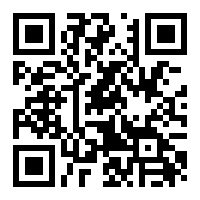สารออกฤทธิ์ทางชีวภาพและฤทธิ์การต้านอนุมูลอิสระของข้าวขาวดอกมะลิ 105
คำสำคัญ:
สารออกฤทธิ์ทางชีวภาพ, ฤทธิ์การต้านอนุมูลอิสระ , ข้าวขาวดอกมะลิ 105บทคัดย่อ
วัตถุประสงค์ของงานวิจัยนี้ศึกษาสารออกฤทธิ์การต้านอนุมูลอิสระและสารฤทธิ์ทางชีวภาพในข้าวงอก และระยะการเจริญของข้าวได้แก่ น้ำนมข้าว ข้าวเม่า และข้าวกล้องของขาวดอกมะลิ 105 (KDML 105) จากการทดลองพบว่าปริมาณสาร ฟีนอลิกในข้าวงอกมีปริมาณสูงสุด (p≤0.05) มีปริมาณ 331.97±8.17 mg GAE/100 g DW ข้าวงอกมีกิจกรรมการต้านอนุมูลอิสระสูงสุดในวิธีการทดลองฤทธิ์การต้านอนุมูลอิสระด้วยวิธี Total antioxidant capacity และวิธี Lipid peroxidation assay สูงสุด ในขณะที่ข้าวน้ำนมมีฤทธิ์ต้านอนุมูลอิสระด้วยวิธี DPPH Radical Scavenging Activity สูงที่สุด (p≤0.05) ผลการทดลองแสดงให้เห็นว่าปริมาณสารไทอะมีน ไนอะซีน และไพริดรอกซิน พบมากในข้าวกล้อง 39.21±0.07 mg/100 g DW) ข้าวงอก (41.93±0.05 mg/100 g DW) และข้าวน้ำนม (17.88±0.03mg/100 g DW) ตามลำดับ ทั้งข้าวกล้องและข้าวน้ำนม มีปริมาณสารแอลฟ่าโทโคเฟอรอลสูงสุด 318.48±6.36 mg/100 g DW และ 308.09±5.85 mg/100 g DW) ในขณะที่ข้าวงอกมีปริมาณแกมม่าออไรซานอลสูงสุด และตรวจวัดปริมาณสารไทอะมีน ไนอะซีน ไพริดรอกซิน แอลฟ่าโทโคเฟอรอล และแกมม่าออไรซานอล ด้วยวิธี HPLC ใช้เครื่องตรวจวัดสัญญาณแบบ UV-detector พบว่า ปริมาณแกมม่าออไรซานอล และไนอะซีนพบมากในข้าวงอก โดยสารแกมม่าออไรซานอล 355.00±7.07 mg/100 g DW และไนอะซิน 41.93±0.05 mg/100 g DW ในขณะที่แอลฟ่าโทโคเฟอรอลพบมากที่สุดในข้าวกล้อง 318.48±6.36 mg/100 g DW
และข้าวน้ำนมพบปริมาณ 308.09±5.85 mg/100 g DW ไพริดรอกซินพบมากที่สุดในข้าวน้ำนม 17.88±0.03 mg/100 g DW ในขณะที่ไทอะมีนพบมากที่สุดในข้าวกล้อง 39.21±0.07 mg/100 g DW จากผลการทดลองแสดงให้เห็นว่ากระบวนการผลิตข้าวงอก และระยะของข้าวน้ำนมมีฤทธิ์ในการต้านอนุมูลอิสระสูง เหมาะต่อการเป็นอาหารฟังชั่นและสามารถเพิ่มมูลค่าสารสำคัญจากข้าว
เอกสารอ้างอิง
ประชาชาติธุรกิจ. (2564). ค้นเมื่อ 2 เมษายน 2565. https://www.prachachat.net/economy/news-820962
นฤมล ธนานันต์. (2555). การจำแนกข้าวพันธุ์ขาวดอกมะลิ105 และพันธุ์ปรับปรุงจากพันธุ์ขาวดอกมะลิ105 ด้วยเทคนิคแฮตอาร์เอพีดี. Thai Journal of Science and Technology. 1(3): 169-179.
ฤทัยวรรณ วงค์ตลาด. (2564). การพัฒนาผลิตภัณฑ์น้ำนมข้าวยาคูเพื่อสุขภาพจากข้าวออร์แกนิค. วิทยานิพนธ์ปริญญาวิทยาศาสตรมหาบัณฑิต สาขาวิชาเทคโนโลยีการอาหาร มหาวิทยาลัยมหาสารคาม. 94 หน้า.
วิภาวดี พันธ์หนองหว้า, ณัฐรดา จําปามี, กรุณรัตน์ สกุลนามรัตน์, ประทีป ตุ้มทอง, เกียรติชัย ดวงศรี และอนุชิตา มุ้งงาม. (2556). การเปรียบเทียบองค์ประกอบทางเคมีที่สําคัญและการต้านอนุมูลอิสระของลูกหม่อน 3 สายพันธุ์. วารสารมทร.อีสาน. 6(2): 69-81.
Butsat S., Weerapreeyakul N. and Siriamornpun S. (2009). Changes in phenolic acids and antioxidant activity in Thai Rice husk at five growth stages during grain development. Journal of Agricultural and Food Chemistry. 57(11): 4566–4571.
Chen M.H. and Bergman C.J. (2005). A rapid procedure for analyzing rice bran tocopherol and -oryzanol contents. Journal of Food Composition and Analysis. 18(2–3): 139-151.
Cho D.H. and Lim. S.T. (2016). Review Germinated brown rice and its bio-functional compounds. Food Chemistry. 196(1): 259-271.
Chinma C.E., Anuonye J.C., Simon O.C., Ohiare R.O. and Danbaba, N. (2015). Effect of germination on the physicochemical and antioxidant characteristics of rice flour from three rice varieties from Nigeria. Food Chemistry. 185(15): 454-458.
Chungcharoen T., Prachayawarakorn S., Tungtrakul P. and Soponronnarit. (2015). Effects of germination time and drying temperature on drying characteristics and quality of germinated paddy. Food and Bioproduct Processing. 94: 707-716.
Dasgupta N. and B. De B. (2004). Antioxidant activity of piper betle L. leaf extract in vitro. Food Chemistry. 88(2): 219-224.
Jannoey P., Niamsup H., Lumyong S., Suzuki T., Katayama T., and Chairote, G. (2011). Comparison of gamma-aminobutyric acid production in thai rice grains. World Journal Microbiology and Biotechnology. 26: 257–263.
Jiamyangyuen S., Nuengchamnong N. and Ngamdee. P. (2017). Bioactivity and chemical components of Thai rice in five stages of grain development. Journal of Cerial Science. 74: 136-144.
Komatsuzaki N., Tsukahara K., Toyoshima H., Suzukic T. Shimizu and Kimura T. (2007). Effect of soaking and gaseous treatment on GABA content in germinated brown rice. Journal of Food Engineering. 78(2): 556–560.
Lin P.L. and Lai H.M. (2011). Bioactive compounds in rice during grain development. Food Chemistry. 127: 86-98.
Moongngarm A. and Saetung. N. (2010). Comparison of chemical compositions and bioactive compounds of germinated rough rice and brown rice. Food Chemistry. 122: 782–788.
Ng L.T., Huang S.H., Chen Y.T., and Su C.H. (2013). Changes of tocopherols, tocotrienols, ‑oryzanol, and ‑aminobutyric acid levels in the germinated brown rice of pigmented and nonpigmented cultivars. Journal of Agricultural and Food Chemistry. 61: 12604−12611.
Punnongwa W., Sea-Eaw A., Sripui J. and Thawornchinsombut S. (2022). Application of mild-subcritical alkaline water extraction: optimum condition for phenolic antioxidant extracted from cold-pressed defatted KDML 105 rice bran and its phenolic profile. Food Research. 6(1): 120–131.
Shao Y., Xu F., Sun X., Bao J. and Beta T. (2014). Phenolic acids, anthocyanins, and antioxidant capacity in rice (Oryza sativa L.) grains at four stages of development after flowering. Food Chemistry. 145: 90-96.
Ti H., Zhang R., Zhang M., QingLi Q., Wei Z., Zhang Y., Tang X., Deng Y., Liu L. and Ma Y. (2014). Dynamic changes in the free and bound phenolic compounds and antioxidant activity of brown rice at different germination stages. Food Chemistry. 161(15): 337-344.
Tian S.U. and Nakamura K. (2004). Analysis of phenolic compound in white rice, brown rice, and germinated brown rice. Journal of Agricultural Food Chemistry. 52(15): 4804-4813.
Teravecharoenchai J., Chalermchaiwat P. and Thuwapanichayanan R. (2021). Principal component analysis application on nutritional, bioactive compound and antioxidant activities of pigmented dough grain. Changmai University Journal of Natural Science. 20(2): 1-10.
Youn Y.S., Park J.K., Jang H.D. and Rhee Y.W. (2011). Sequential hydration with anaerobic and heat treatment increases GABA (-aminobutyric acid) content in wheat. Food Chemistry. 129: 1631–1635.
Yodpitak S., Sookwong P., Akkaravessapong P. and Wongpornchai. (2013). Changes in antioxidant activity and antioxidative compounds of brown rice after pre-germination. Journal of Food and Nutrition Research. 1(6): 132-137.
ดาวน์โหลด
เผยแพร่แล้ว
เวอร์ชัน
- 18-03-2025 (3)
- 19-02-2024 (2)
- 30-04-2022 (1)
รูปแบบการอ้างอิง
ฉบับ
ประเภทบทความ
สัญญาอนุญาต
ลิขสิทธิ์ (c) 2022 วารสารเกษตรศาสตร์และเทคโนโลยี

อนุญาตภายใต้เงื่อนไข Creative Commons Attribution-NonCommercial-NoDerivatives 4.0 International License.
เนื้อหาและข้อมูลในบทความที่ลงตีพิมพ์ในวารสารทดสอบระบบ ThaiJo2 ถือเป็นข้อคิดเห็นและความรับผิดชอบของผู้เขียนบทความโดยตรงซึ่งกองบรรณาธิการวารสาร ไม่จำเป็นต้องเห็นด้วย หรือร่วมรับผิดชอบใดๆ
บทความ ข้อมูล เนื่อหา รูปภาพ ฯลฯ ที่ได้รับการดีพิมพ์ในวารสารทดสอบระบบ ThaiJo2 ถือเป็นลิขสิทธิ์ของวารสารทดสอบระบบ ThaiJo2 หากบุคคลหรือหน่วยงานใดต้องการนำทั้งหมดหรือส่วนหนึ่งส่วนใดไปเผยแพร่หรือเพื่อกระทำการใดๆ จะต้องได้รับอนุญาตเป็นลายลักอักษรณ์จากวารสารทดสอบระบบ ThaiJo2 ก่อนเท่านั้น







